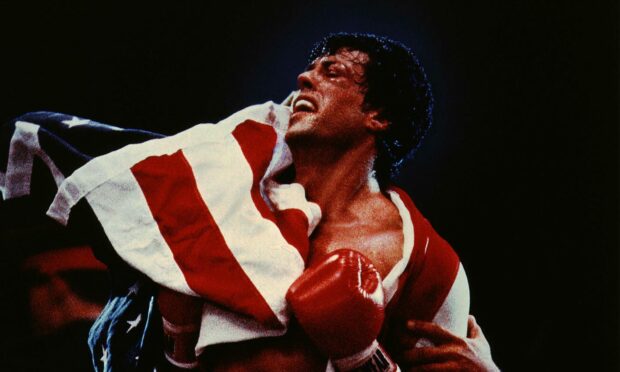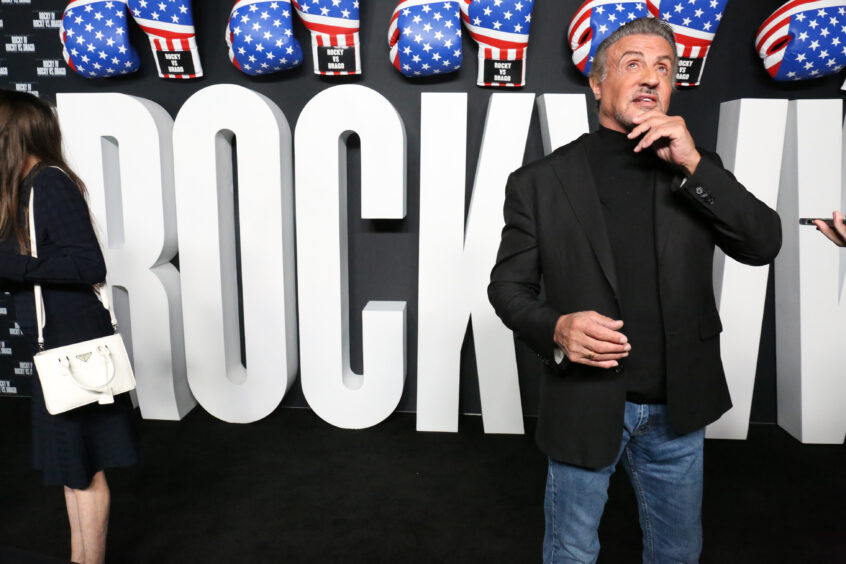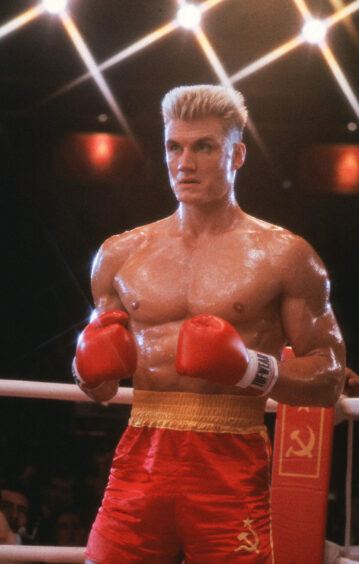
There were many reasons why the Cold War finally came to an end. Economic pressures, the Soviet war in Afghanistan, revolt in Eastern Europe, and the negotiating skills of Gorbachev and Reagan…and Rocky Balboa?
Rocky IV, the 1985 boxing movie sequel that pitted the flag-bearing American everyman pugilist against the nefarious, drug-taking might of Ivan Drago, a deadly pawn of the Soviet Union, was one of the biggest box office hits of the ’80s and fed into audiences’ fears of a nuclear war between the two nations.
It is also regarded as one of the most ridiculous, jingoistic and over-the-top movies of the decade: colourful, loud, brash, and far removed from the grit and rawness of the original, Oscar-winning Rocky.
Written, directed by and starring Sylvester Stallone, the action hero has admitted, four decades on, that he too wasn’t happy with Rocky IV, so during lockdown he picked the film apart, adding in deleted scenes and alternative takes, and removed entire sections such as those featuring another ’80s cliché, the talking robot, which Rocky bought for his brother-in-law, Paulie.
A director’s cut was unveiled on Thursday by Stallone in Philadelphia, the home of Rocky, and Scottish fans will have the chance to see the new version in cinemas here from Friday.
Early critics’ reviews of the new cut describe it as having a completely different tone – more sombre, less political and focusing on the death of Apollo Creed.
Creed, played by Carl Weathers, is portrayed here as the ageing gladiator chasing the shadows of the past glories of his career, rather than the egotistical flag-waver full of hubris who was depicted in the 1985 version. Dolph Lundgren as Ivan Drago is also given more to do, adding more depth to the previously two-dimensional villain role, and making it more in keeping with his character in 2018’s Creed II, the indirect sequel to Rocky IV.
But it’s impossible to wipe out the Cold War overtones. So, with the benefit of 36 years’ hindsight, was it really the fall of Ivan Drago that signalled the beginning of the end for Communism, rather than the fall of the Berlin Wall?
“Rocky IV was a very ham-fisted attempt to solve the crisis,” said ’80s movie expert John Rain, author of the recently released Explodobook: The World Of ’80s Action Movies.
“I think Stallone is very clumsy with it, but it’s certainly his attempt. It’s a revenge film, which makes it out of step with the rest of the series.
“It’s almost like Stallone says, ‘Right, we’re going to solve the East-West Cold War by beating one of their champions and giving an impassioned speech at the end, so much so that even the Gorbachev lookalike stands up and applauds’. It’s mad.
“Maybe it’s one of those things where you drop a pebble in the water and the ripples carry on.”
Rocky IV came in the same year as another Stallone blockbuster, Rambo: First Blood Part II, which also featured a Russian villain.
The Cold War became a sub-genre in ’80s Hollywood moviemaking, with films such as Red Heat, Wargames, Red Dawn and Spies Like Us all tapping into our fear of the secretive Soviets.
“The reason for this was because you have a recognised baddie already in place, you didn’t need to make a villain up,” explained Rain. “There’s an actual threat there and the Soviet state was a recognised bad guy you could pluck out and use.
“I’ve previously written a book about the Bond movies, and even they had Cold War themes throughout the ’80s with the likes of Octopussy and The Living Daylights.
“Dolph Lundgren plays a Russian agent in A View To A Kill.”
The new Cold War: Geopolitical experts assess threat posed by Eastern superpowers as tensions fester
Rain said Rocky IV was his favourite entry in the series as a child and while he’s looking forward to seeing the director’s cut, he doesn’t expect it to better the original.
“I watched it in the cinema after seeing a clip of it on TV where James Brown sings Living In America. I was excited by it as a kid.
“But the first thing Stallone said when he announced this new version was the robot would no longer be in it, which I was gutted about.
“That robot went out on tour with James Brown and was on stage with him every night. It’s seen some things!”

Enjoy the convenience of having The Sunday Post delivered as a digital ePaper straight to your smartphone, tablet or computer.
Subscribe for only £5.49 a month and enjoy all the benefits of the printed paper as a digital replica.
Subscribe © MediaPunch/Shutterstock
© MediaPunch/Shutterstock